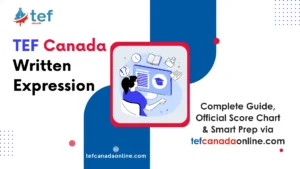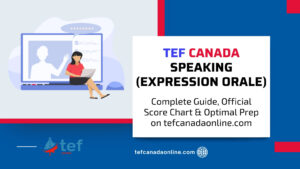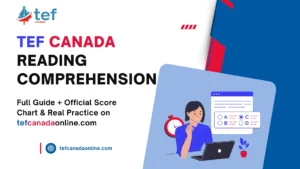
Free TEF Canada Simulator: Try a Full Official Test Online
Try our free TEF Canada simulator online and experience the real exam format before test day. Practice today on tefcanadaonline.ca.
Plateforme de préparation pour réussir le TEF

Listening comprehension is often underestimated—yet it makes up 25% of your total TEF Canada score and can make or break your result. In this guide, discover how the section works, level-based strategies, common mistakes, and the best tools to improve starting today.
The TEF Canada listening section includes 60 multiple-choice questions, completed over approximately 40 minutes.
You’ll hear a range of audio types:
👉 Goal: Evaluate your ability to identify, understand, and analyze spoken French in real time.
TEF Score | NCLC Level | CEFR Level |
334–360 | 11–12 | C2 |
316–333 | 10 | C1 |
298–315 | 9 | C1 |
280–297 | 8 | B2 |
249–279 | 7 | B2 |
217–248 | 6 | B1 |
181–216 | 5 | B1 |
≤ 180 | <4 | A2 or below |
These ranges are based on the official 2025 NCLC/TEF Canada equivalency tables.
💡 Pro tip: Always read all four answer choices before listening—this gives you a huge advantage.
With the right strategies and the right tools, even a “visual learner” can master listening comprehension. Start gradually, practice frequently, and consider investing in a full training pack if your goal is to reach NCLC 7+.

Try our free TEF Canada simulator online and experience the real exam format before test day. Practice today on tefcanadaonline.ca.

Master TEF Canada 2025 written expression with structured prep, official tasks, and detailed feedback at tefcanadaonline.com.

Prepare for TEF Canada 2025 speaking test with updated score chart, official-style mock exams, and expert tips on tefcanadaonline.ca.

Prepare for TEF Canada 2025 reading with official-style tests, updated score chart & smart tools on tefcanadaonline.com.